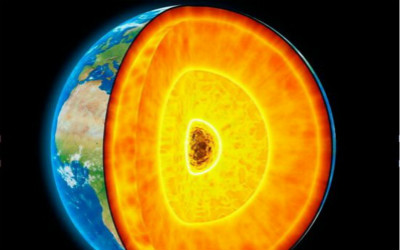For some time now, scientists have understood that the earth's crust is divided into plates that move about at the rate of a few inches a year.
現(xiàn)在科學(xué)家們已經(jīng)搞清楚地殼分為各個(gè)板塊,而且板塊間以每年幾英寸的速度移動(dòng)著。
But over time, form mountain ranges and volcanoes.
但隨著時(shí)間的推移山脈和火山得以形成。

They have also known that the earth's mantle, the layer between the earth's crust and core, was the major player in the movement of the plates.
他們也已經(jīng)搞清楚地球的地幔,就是地殼和核心之間的那層是板塊運(yùn)動(dòng)的主要參與者。
Scientists talk about the mantle as a kind of weather system.
科學(xué)家認(rèn)為地幔是一種天氣系統(tǒng)。
There are cooler and warmer sections of the mantle that are in constant flux with one another, much like gathering storm clouds.
地幔部分持續(xù)的流動(dòng)有冷卻器和溫暖,就像風(fēng)暴云聚集一樣。
These subterranean storms miles below the earth's surface, though very slow in development, can eventually exert powerful force on the earth's crust.
這些地下風(fēng)暴低于地球表面,雖然發(fā)展非常緩慢,最終會(huì)對地殼產(chǎn)生強(qiáng)大的力量。











